While being listed on the record as a UNESCO Heritage Site for a place is certainly an important consideration for discerning travelers and excursionists, it just so happens that the sites under the limelight usually are the ones that are frequently visited.
There are about 1,000 sites that are scheduled under the heritage site list, located far and wide both in both discernible and inconspicuous parts of the world and which are usually associated with remarkable histories and legendary stories of their own.
But unfortunately being lesser known they regularly escape the itineraries of travelers. Nevertheless, these little-known places are some of the most exotic and fascinating places that hide a lot of charm and secrets for the delight of the tourist.
Here we mention 25 such lesser-known UNESCO world heritage sites which are incredible in their own right and must and should be included in any traveler’s checklist while they trot the globe searching for exquisite, thrilling, and adventurous.
Samarkand, Uzbekistan
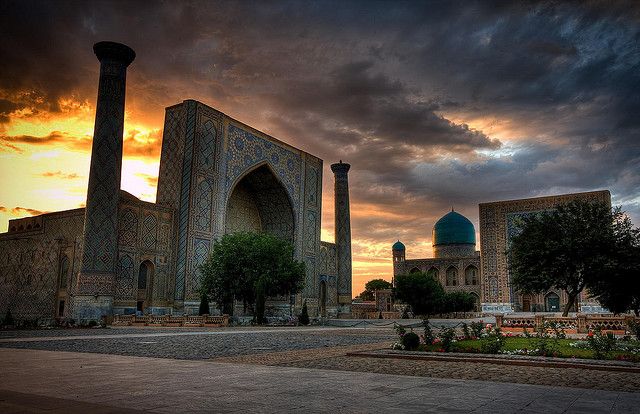
Samarqand was and is still an important city in Uzbekistan, also being its third largest. Dated to be around the 5th century BC, the city is one of the oldest in the world and remained a seat of power for long for numerous Central Asian Kingdoms.
Samarqand held prominence due to its location, being situated on the antiquated Silk Route, and forming an important center of China’s trade with the West. The site is redolent with beautiful monuments and landmarks such as Bibi Khanym Mosque, Gur-e-Amir, Shah-i-Zinda, etc., reminiscent of lost glory.
Straddling these are the tokens of modernity in the form of various buildings, parks, squares, and avenues. Still being inhabited, the city is bucking up to changing times but remains a magnificent place to visit.
Amphitheatre of El Jem, Tunisia
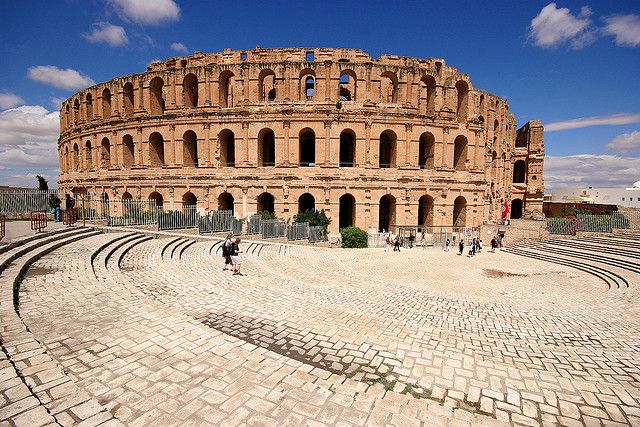
A spectacular structure, located at the center of Tunisia is the Amphitheater of El Jem, bearing a stunning example of exquisite Roman culture and architecture.
The complex, a 3rd century edifice, designed for holding grand events and shows, could hold an assembly of 35,000 spectators and is also one of its kind in Northern Africa. Its striking resemblance to the Roman Colosseum is visibly obvious and makes it one of the most frequented sites for tourists descending onto the country.
Mammoth Cave National Park, Kentucky, United States
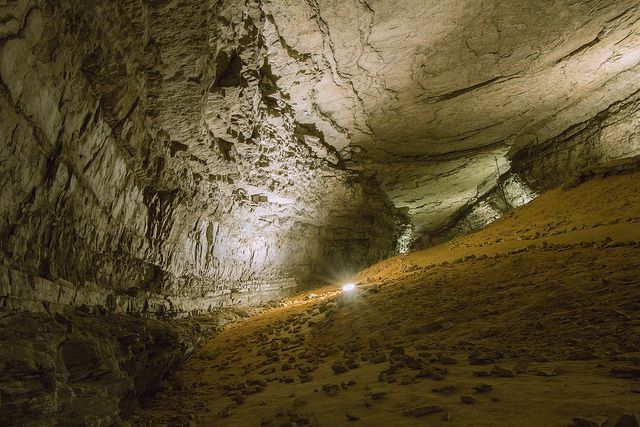
This astounding cave system is the largest in the world and extends breathtakingly to over three countries. Part of its magic lies in the fact that about 365 miles of caves have already been explored and mapped and still more caves are being discovered which makes it pretty unusual and mysterious.
The caves were formed by the dissolution of limestone by water and contain numerous exotic underground lakes and other unique geological formations in addition to several exclusive animal species that have adapted to the existing natural conditions, making it astonishingly beautiful.
Mammoth caves are open throughout the year, though summers are mostly favored by tourists. At other times it remains relatively less crowded.
[Browse through our USA tour packages to plan your trip.]
Chan-Chan, Peru
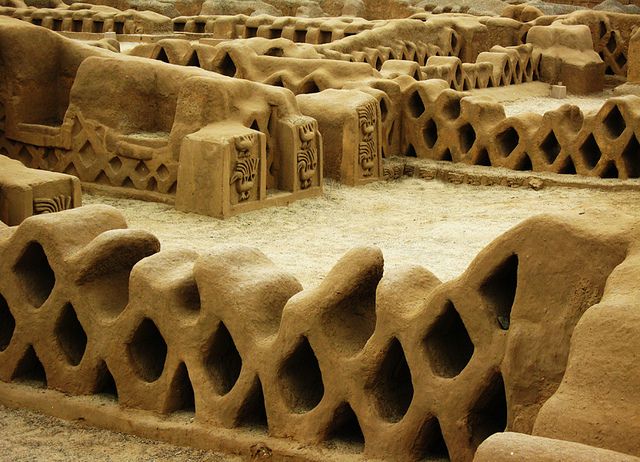
Chan-Chan, located in the South American country of Peru is yet another lesser-known UNESCO World Heritage Site in the world. This site was the capital of Chimu people, whose kingdom reached its highest point in the 15th century before being conquered by the Incas.
The most notable thing about this 1986 designated lesser-known UNESCO World Heritage site is the close and well-planned layout and division of the city, which is done in nine citadels and contain structures such as temples, burial grounds, palaces, and other public places like storehouses and reservoirs.
The main complex is spread over a vast six-square-kilometer area and is punctuated by carefully outlined industrial, agricultural, and water management systems.
Touring the site nearly takes 3-4 hours and it’s advisable to move to groups and hire a guide. There is also a small museum that contains a small collection of pottery and other artefacts from the city that are of some interest to the travelers.
Mount Emei, China
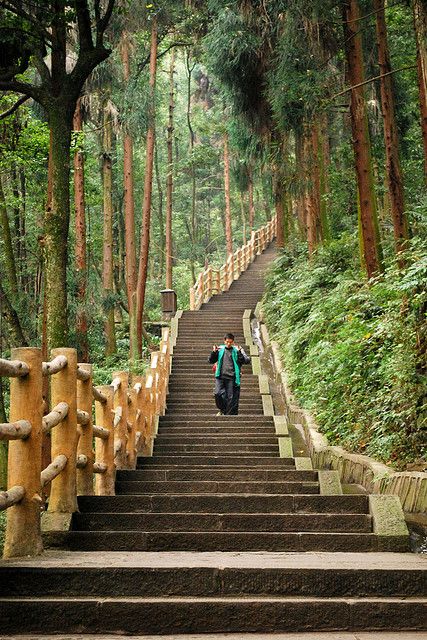
This impressive site is located in the Sichuan Province of China. The most striking feature of this spot, however, is the giant, 233-foot-tall statue of Buddha which is the tallest statue of its kind from the ancient world.
Carved out from the cliff itself, it is situated at the confluence of three rivers which makes it look even more surreal and amazing. Mt. Emei is also China’s well-known, summer tourist spot and due to its cool, pleasant weather, and salubrious climate, is pretty popular. Besides, the site has a strong influence of Buddhist culture and there are numerous temples that abound the area.
[Also read the Reasons to Travel to Macau.]
Borobudur Temple, Java, Indonesia
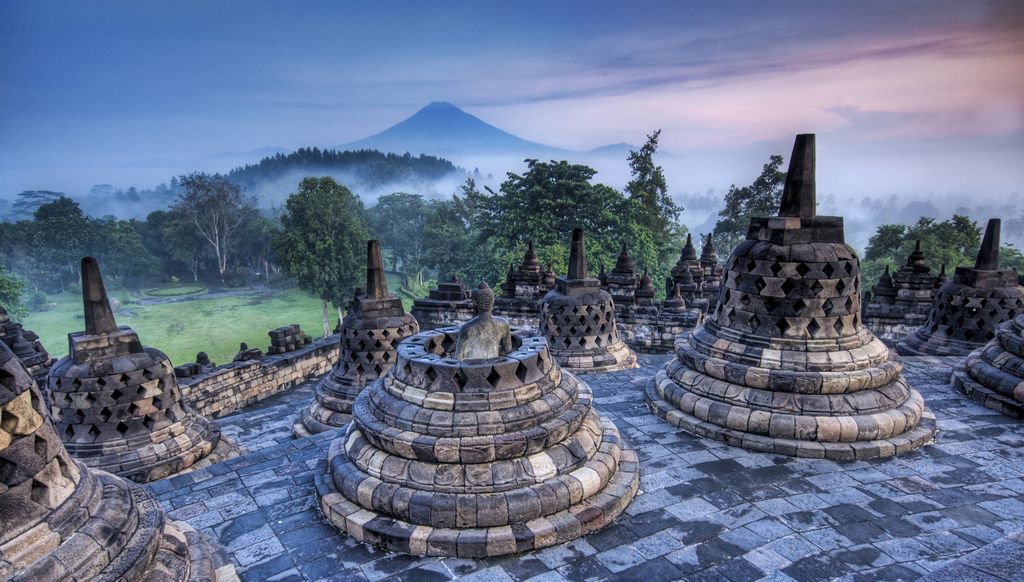
Borobudur is one of the most important sites of Buddhism and the single most visited tourist spot in Indonesia. Located at about 40 km north-west of Yogyakarta, the complex has a majestic charm and combined with the breathtaking views of the surrounding countryside like that of Mount Merapi, makes it an outstanding destination. Borobudur Temple was built around the 8th and 9th century BC during the rule of the Syailendra Dynasty.
The architecture of the temple is such that it is made to signify the concept of the Universe in Buddhism. The temple, however, is actually a part of a wider compound that includes two smaller temples called the Mendut Temple and Pawon Temple as well.
It was used as a worshiping site during the 10th to 15th century and since its re-discovery in the 19th century, it has become an important site for tourists’ excursions.
[Browse through our Indonesia tour packages to plan your trip.]
Polonnaruwa, Sri Lanka: Lesser Known UNESCO World Heritage Sites
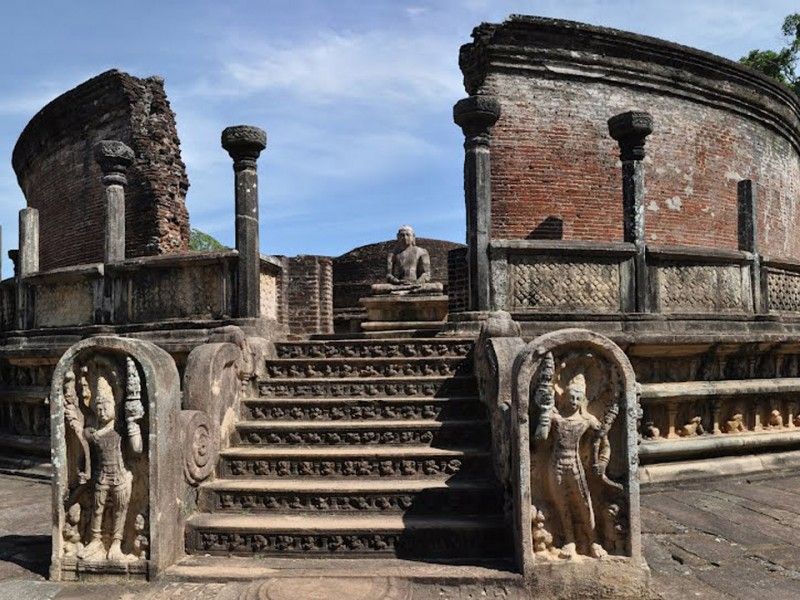
Polonnaruwa was an important city of the Polonnaruwa kingdom, whose rulers ruled from the plains of Sri Lanka, about 1000 years ago. Being the center of a thriving trade of the empire, the city was buzzed with traders businessmen, and ordinary citizens who used to pray in its numerous temples.
Its legacy in the form of various buildings and structures is pretty much intact today and gives a glimpse of a glorious era of architecture. There are hundreds of ancient structures at the archeological park which is like a treasure for any historical buff. Besides its proximity to several elephant-filled national parks brings it fairly under the gambit of a tourist’s trail.
[Read top reasons to travel to Sri Lanka.]
Wadi Al-Hitan, Egypt

This extraordinary site contains the remarkable body of fossils that point to the evolution of whales, crocodiles, sea snakes, sea turtles, and other such animals. Spread in an expansive area, these relics accords stunning support to the theory that these sea-borne animals once habituated on land before the natural course of evolution made them either amphibians or water-based.
The amazing concentration of so many specimens in one place lets archeologists create the environmental and ecological history of the place. The site was inscribed into the UNESCO World Heritage list in the year 2005 and attracts a considerable number of visitors every year.
Machu Picchu, Peru
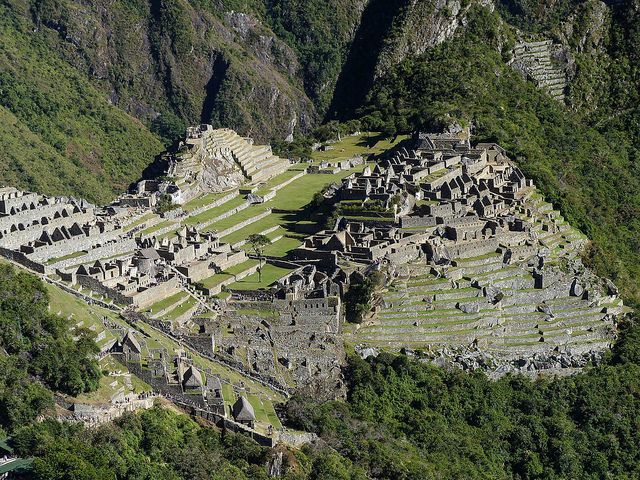
Located in one of the most spectacular settings, Machu Picchu is an amazing and breathtaking urban center of the famous Inca Empire at its zenith. The compound is an assembly of temples, homes, palaces, and plazas, however, its function and purpose of construction are still unknown.
Located at the stunning height of 7000 feet, it was deemed as The Lost City before it was rediscovered in 1911 and was turned into an important tourist spot. Tourist footfall is nearly 2500 every day and although it can visited throughout the year, the months between June and March are the busiest.
Ha Long Bay
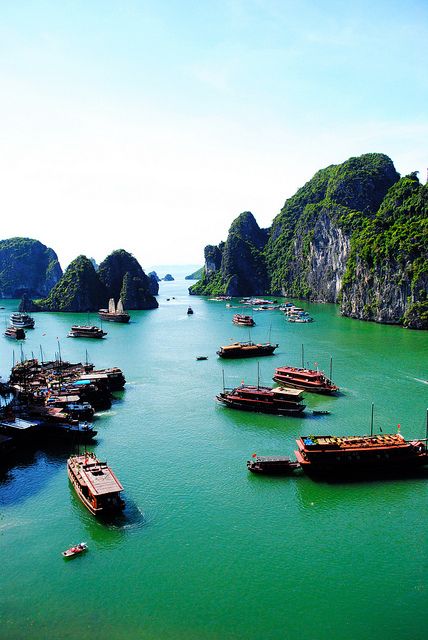
This spectacular natural landscape made up of around 2,000 or more islands or islets in the Gulf of Tonkin is an amazing marvel to witness.
There is a local legend associated with the site which says that the islands were created by a great dragon that descended from the sea from the mountains and as it charged towards the coast, its beating tail struck the landmass and created valleys and crevices.
Although it’s open for tourists all around the year, winters here are particularly chilling. Besides, alongside sightseeing, there are other activities for tourists to revel in, such as kayaking, swimming, climbing, and trekking through the largely uninhabited archipelagos.
Dazu Rock Carvings
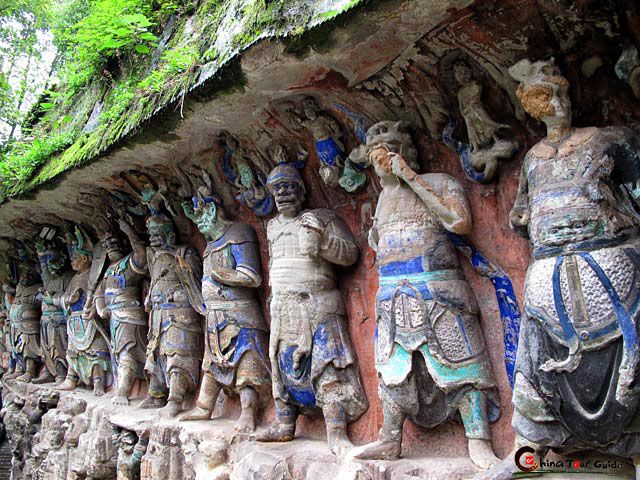
An exceptional landmark of amazing sculptures and carvings, these are structures depicting different Chinese religious traditions and date back from the 9th to the 13th century.
Most of the carvings are outstanding for their aesthetic appeal and exhibit both secular and religious heritage and happenings of daily life in China. There are in total of some 50,000 statues in the complex and represent art and wisdom influenced by the Buddhist, Confucian, and Taoist religious faiths.
[Plan tour trip with our China tour packages.]
Begpark Wilhemshohe
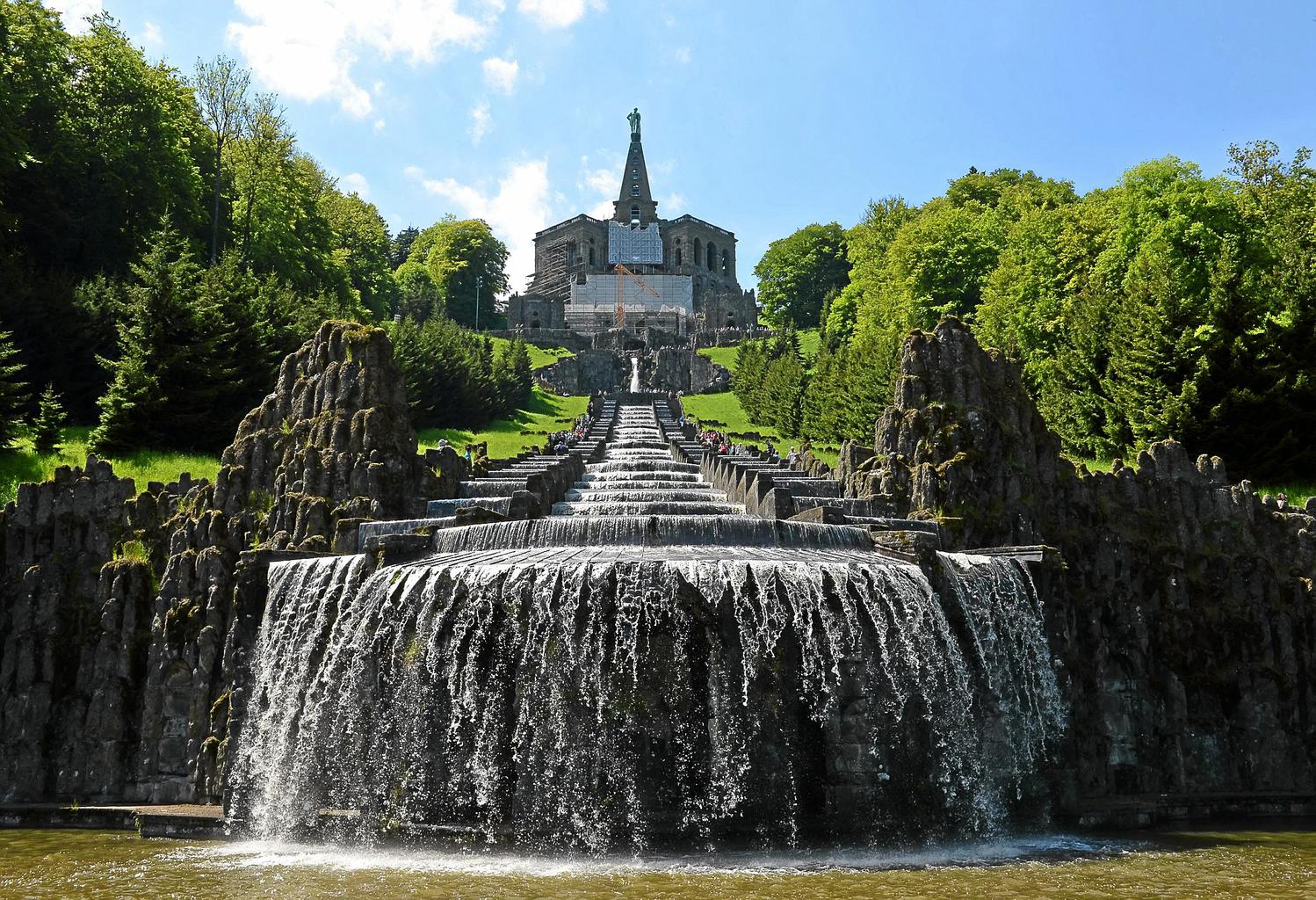
A system of complex waterway systems spread over a broad 2.5-kilometer landscape, and descending from a long hill is a popular tourist destination in the town of Kassel, Germany.
Punctuating the structure is a giant statue of Hercules from where the water descends, being passed through several water-wheeled powered channels like fountains, basins, waterfalls, and grottoes.
These beautiful networks of water displays were originally laid down by Landgrave Carl of Hesse-Kassel in the year 1689. The enchanting architecture of the site along with the vast expanse of the park is stunning proof of the delicate aesthetics of Baroque and Roman.
[Explore the best of Germany with this tour package.]
Tsingy De Bemaraha Strict Nature Reserve, Madagascar
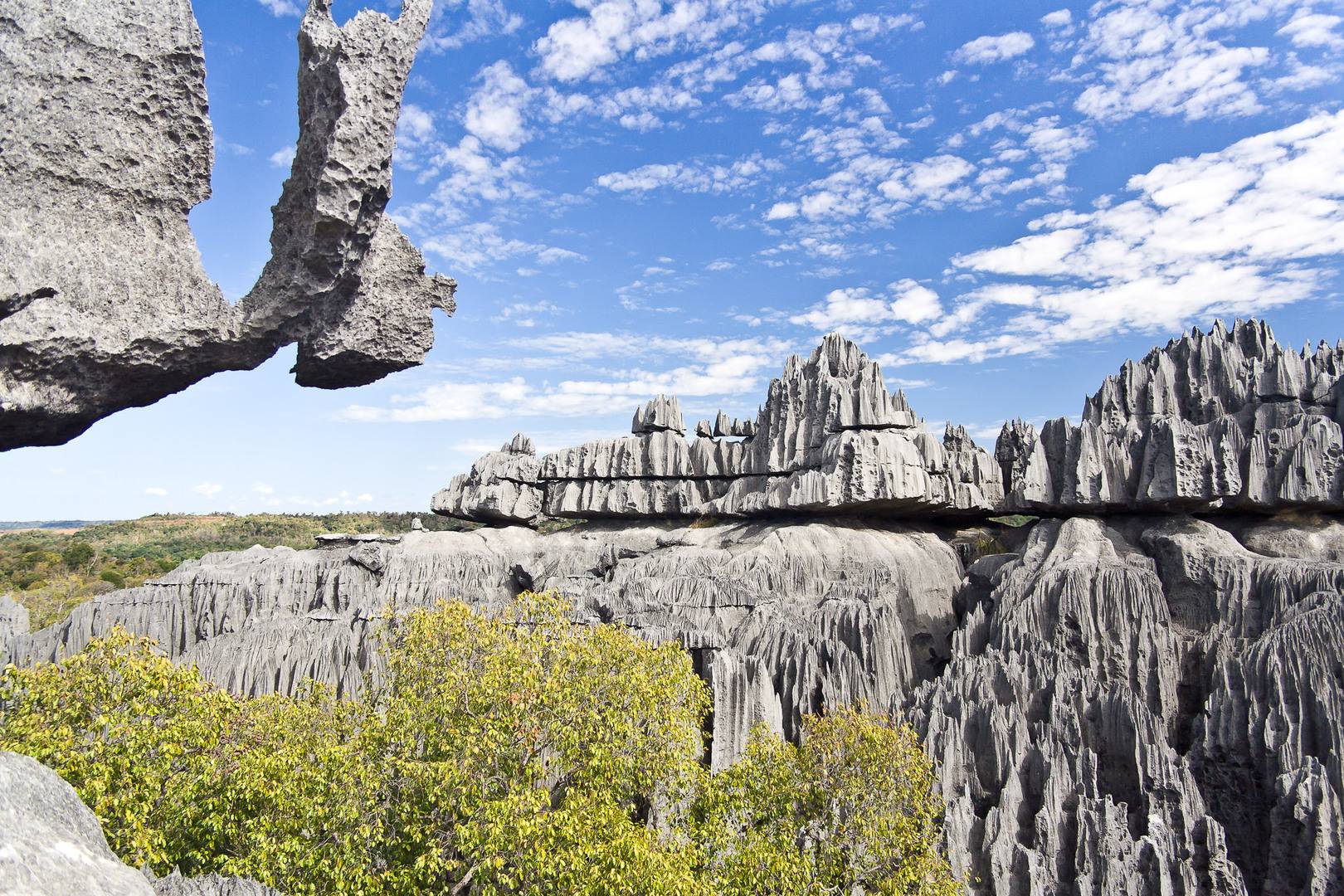
Located close to the western coast of Madagascar, this vast and astonishing region, spread over 666 square kilometers of territory was declared a UNESCO World Heritage site in 1990. The site has a unique geography in the sense that the stones that shape its features rise to a height of 70 meters and are very acute, and razor-sharp at the top.
At heights lower than this, there is vegetation in the form of forests, mangrove swamps as well extremely rare and exotic species of animals’ population like those of wild birds and lemur. Tsingy is one most fabulous natural landscapes of the Great Island and even of the world and is one of the very popular adventure destinations.
Fortress of Soumenlinna, Finland
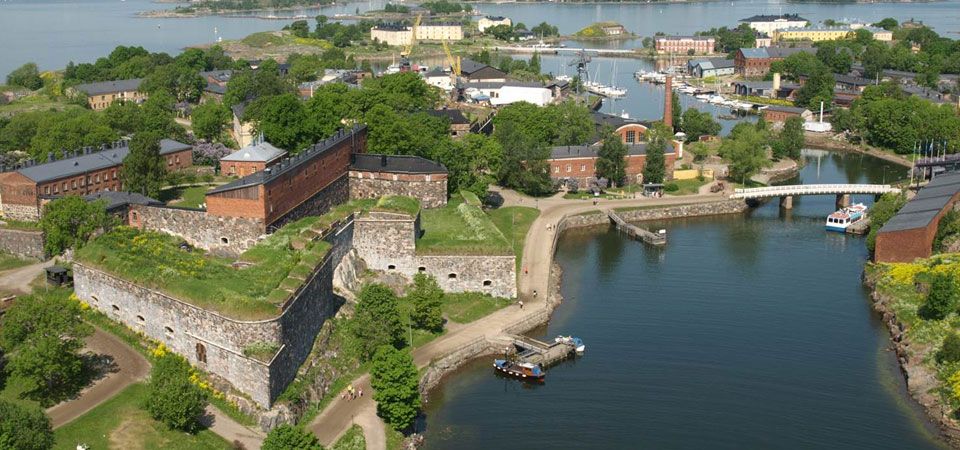
Giving a beautiful instance of imperial military architecture of the olden days, this fort was built by Sweden in the second half of the 18th century on a group of islands located at the entrance of Helsinki harbor.
It was originally constructed by the Swedes to protect Helsinki from any attack from the sea. Today, it stands as an important historical icon for the country and is a great place to take summer afternoon guided walks. The place has some museums, the most attractive of all being the Soumenlinna Museum, which draws the maximum number of tourists.
Mountain Railways of India

These may be called pleasure trips through the dreamy locations analogous to some fantasy of Bollywood film, but in reality, these tiny toy trains are some of the world’s remaining heritage that beckons to an old world charm of British Rule in India.
Journeying through some of the most exotic hill towns of the country, these trains- Darjeeling Himalayan Railway, Nilgiri Mountain Railway, and Kalka Shimla Railway- leading in their characteristic movement take past through stunning picturesque landscapes, deep, lush green vales, fanciful small towns and old nineteenth-century tunnels.
Visiting these hill stations through these trains makes the trip much more enjoyable and memorable and hence this experience is something that one must not miss to undertake.
[Browse through our hill station tour packages to plan your trip to India.]
Okavango Delta
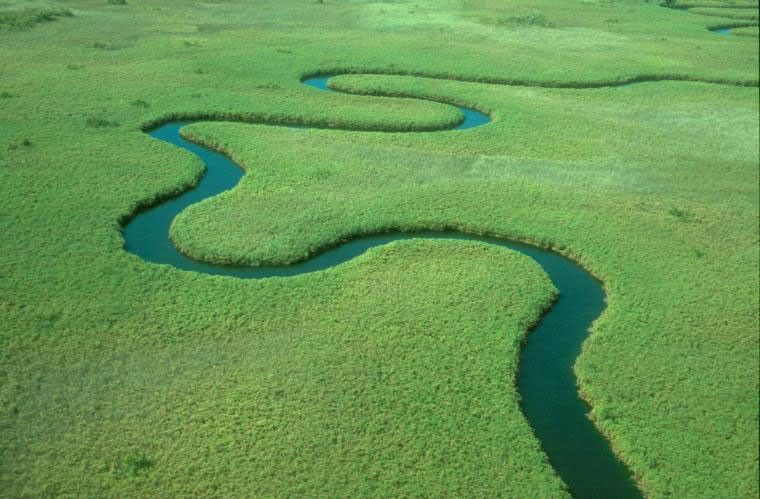
Okavango Delta is a unique tract of land in the sense that the rivers associated with the delta empty themselves not in the sea but into an open land where it usually floods the vast savannah. Most of the water that the surface receives is transpired into the atmosphere through plants while the rest is evaporated.
An exclusive characteristic of the site is that the usual flooding of the Okavango River happens during the dry season. As a result, the native plants and animals have adapted their biological clock according to the seasons and climate.
Thus, the region of the Okavango Delta is stunning proof of a harmonious balance between hydrological and biological processes. The Delta also provides shelter to some of the most endangered species of animals such as Cheetahs, African Wild Dogs, Black rhinoceros, African Wild Lion, etc.
Hattusa: Lesser Known UNESCO World Heritage Sites
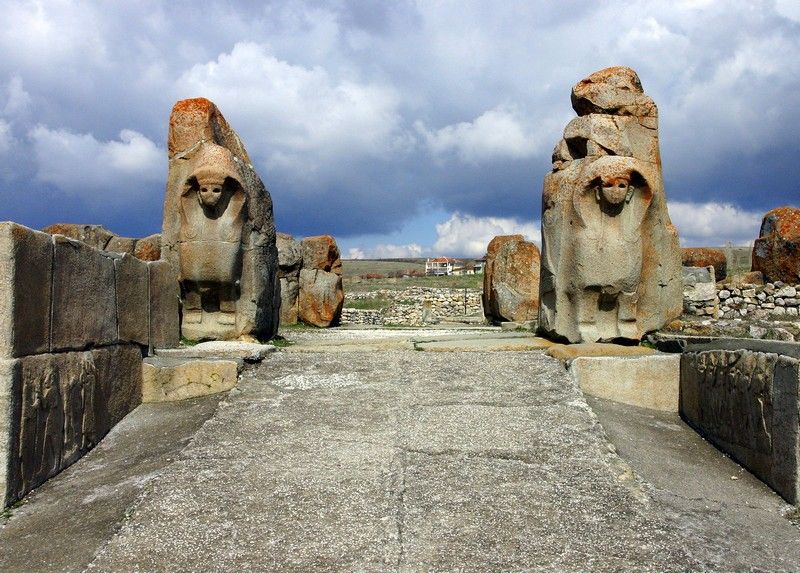
The Hittites lived and flourished over a vast area, the capital of which was the Hattusa, characterized by a close urban organization, the number of buildings such as fortifications, temples, and royal residences as well as splendid ornamentation like that of the Lion’s Gate and the Royal Gate.
The Hittite civilization is believed to be one of the four greatest civilizations of the ancient world, the other three being Mesopotamia, Egypt, and Assyria. The city of Hattusa enjoyed considerable prestige in Anatolia and Northern Syria in the 2nd millennium B.C.
[Discover ancient turkey with this tour package.]
Joggins Fossil Cliffs

The fossils are the world’s most comprehensive record of primitive life turned into fossils. According to dating records, Joggins was covered with dense tropical swamps and a massive amount of organic matter that got buried beneath the surface and over time was converted into coal.
The region is extended into an immense 15-kilometer of coastal cliffs and gives a stunning glimpse of the fine details of life that existed millions of years ago. Joggins was officially inducted into the UNESCO World Heritage List on 7th July 2008. There is a steady inflow of tourists here. Facilities around the site include a restaurant, wheelchair accessibility as also limited-duration Internet access.
Heart of Neolithic Orkney
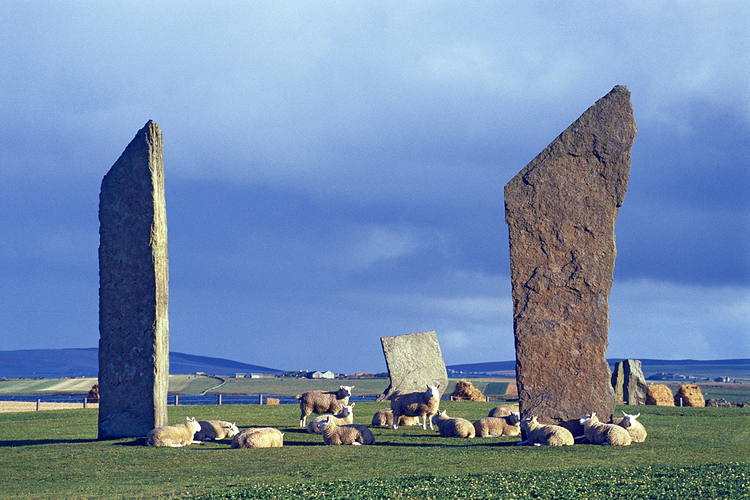
Located in Scotland, this group of Neolithic monuments is Europe’s most thorough village of the Neolithic age. It essentially consists of a large chambered tomb and two ceremonial stone circles together with a settlement.
The site is about 5,000 years old and gives a misty representation of prehistoric life on this remote island. It also includes in its complex, Skara Brae, a well-preserved and accessible prehistoric site which is a domestic settlement and contains stone walls, stone furnishings such as beds, and a passageway.
Moreover, there is Maeshowe, which is a marvelous instance of the architectural genius of the Neolithic age. Besides, there are Stones of Stenness and The Ring of Brodgar which are worth seeing as well.
The Bronze Age Burial Site of Sammallahdenmäki
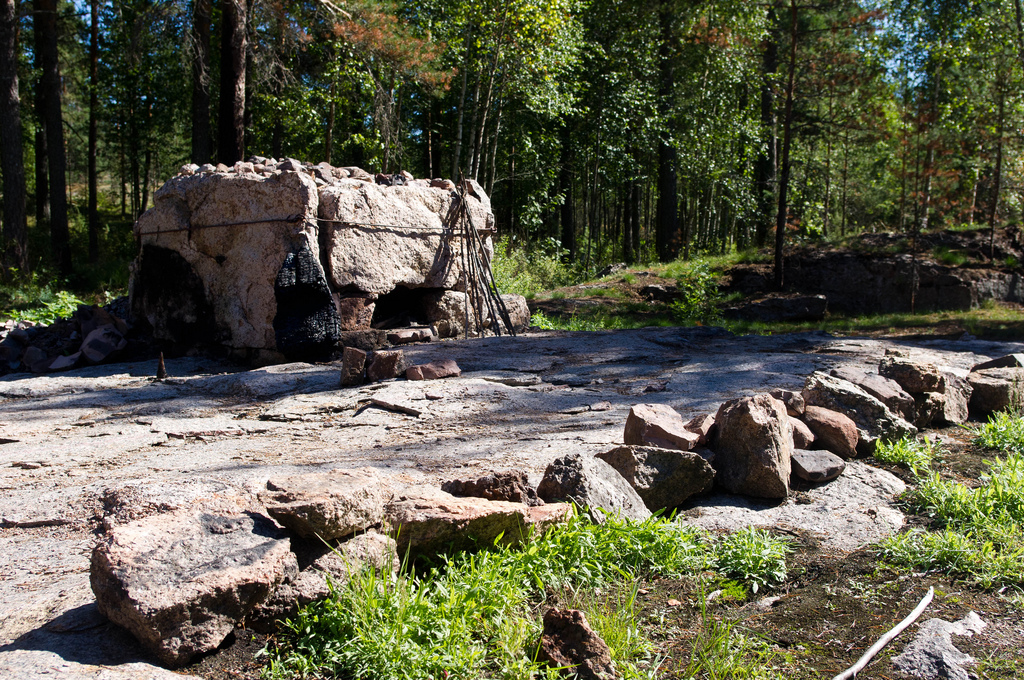
Believed to have been constructed about 3,000 years ago, this expansive space contains 30 cairns, manufactured from granite. The representations on the tomb show a culture of Sun worship, which was pretty common amongst the Scandinavians and was associated with their practice of agriculture for which Sun plays an important part.
Besides, the site also contains a couple of more structures- one is oval and the other is rectangular for which historians and archeologists have not been able to find a definitive answer.
Australian Convict Sites
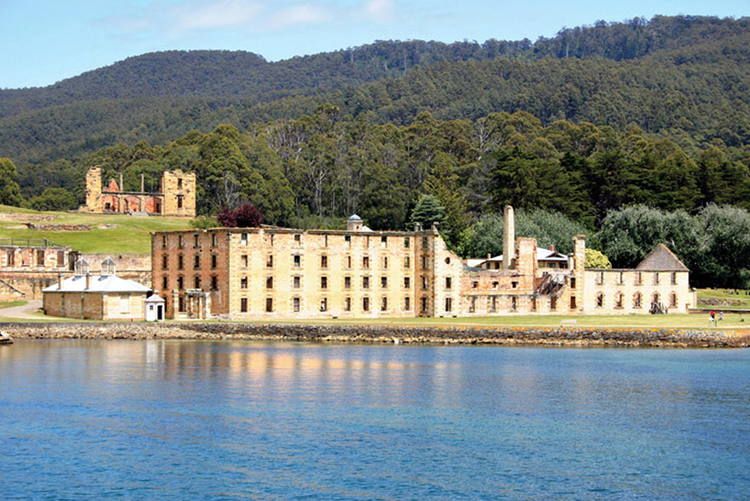
These notorious grounds are a stark reminder of the historical antecedents of the Australian Land. During colonial times and long before it was constituted into a country, Australia used to be the prisoner site for the convicts of Great Britain.
It is believed that more than half a million men, women, and children were transported to Australia, in the twenty years between the years 1787 and 1868. The facility is spread over eleven penal sites from Fremantle to New South Wales.
Although not the best of the places for convicts, these have now been converted into tourism spots that reveal the early events through Australian History.
[Also read top things to do in Australia.]
Historic Mosque City of Bagherat, Bangladesh
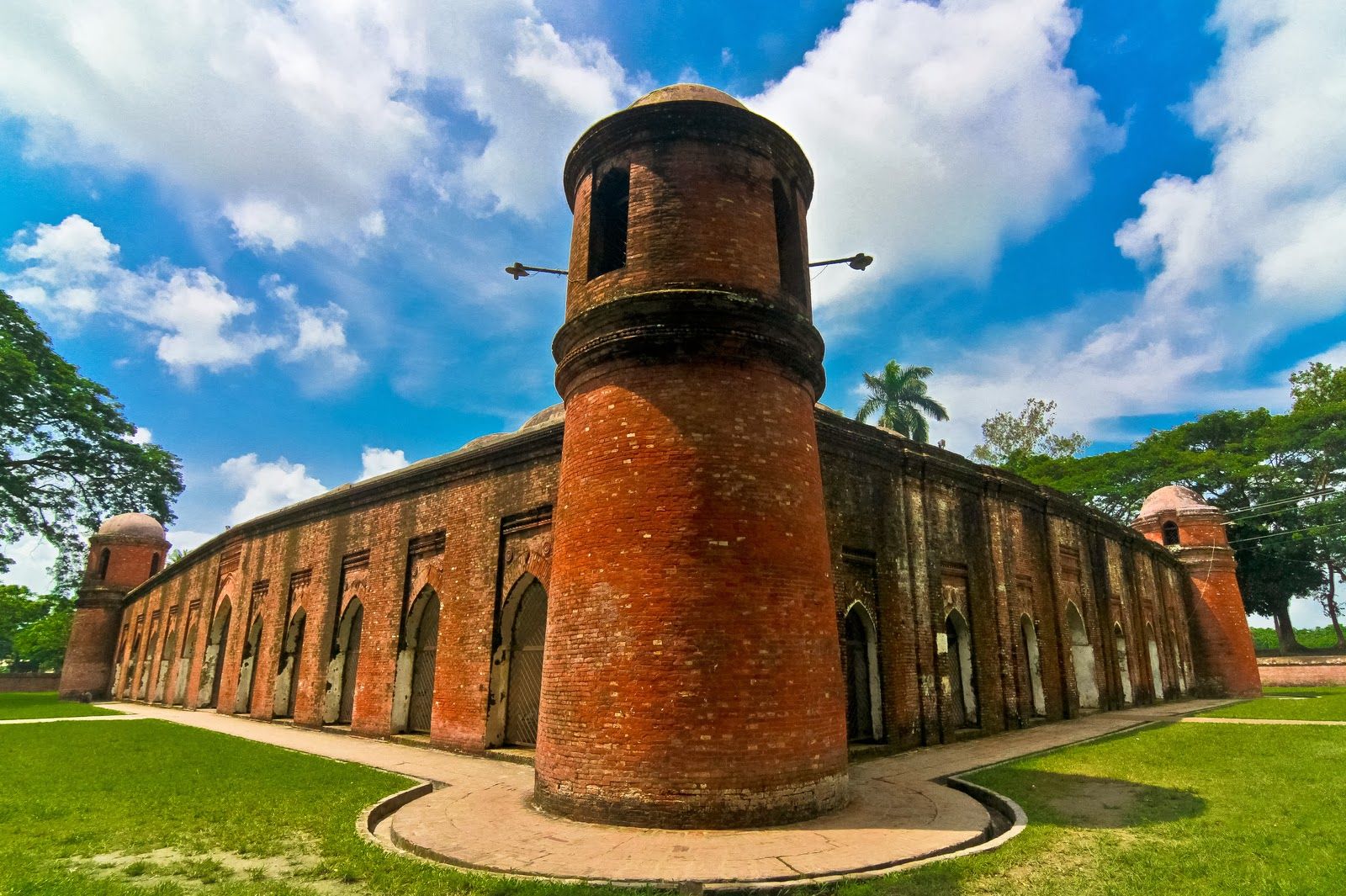
Built under the command of Turkish General Ulugh Khan in the mid-1400s, this Islamic community is comprised of dwellings, tombs, bridges, roads, and some 360 mosques – all rendered from sunbaked bricks, mortar, and lime.
Despite the rudimentary materials, the structures are indicative of expert building techniques concerning spatial planning and arrangement. A vast and astounding complex made up of several tombs, dwellings, roads, bridges, and about 360 mosques was built by Ulugh Khan in the mid-15th century.
The buildings are all constructed from sunbaked bricks, lime, and mortar, and even though show a relative lack of sufficient material still exhibit considerable technical skills and architectural understanding.
Tsodilo

Lying in the expanse of 10 square kilometers in the dead of the Kalahari Desert, Tsodilo is an awesome and largest concentration of rock art in the world. Being called the “Louvre of the Desert”,
there are over 4,500 paintings that furnish an ample record of the sequential account of human activities and the evolution of the environment over the period of a hundred thousand years. The site is now revered as a place of worship by the local communities who believe the place is frequented by their ancestral spirits.
Joya de Cerén Archaeological Site, El Salvador
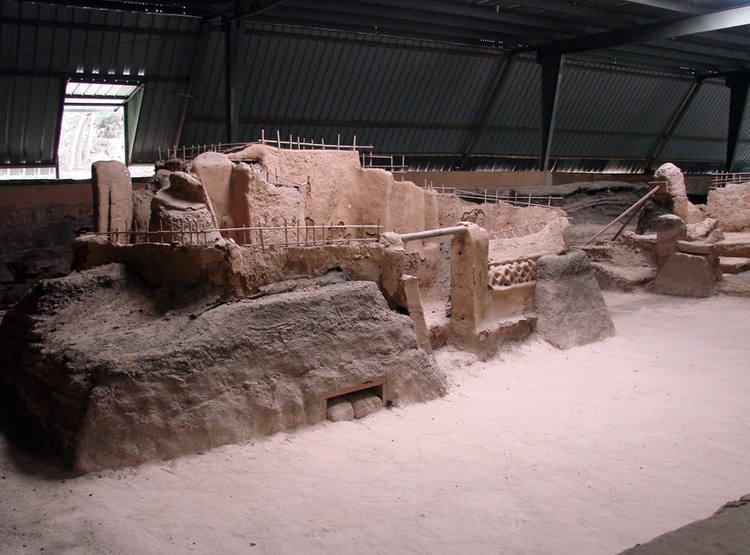
Joya de Ceren Archeological Site was once upon a time a flourishing agricultural settlement when at the turn of the 7th century it was buried under about 20 feet of volcanic ash when a close-at-hand volcano erupted and the city had to be abandoned.
However, it was resettled again in 400 AD, but due to another volcanic eruption, it was again deserted. It is believed that the villagers were able to evacuate the city just in time and there were no casualties.
But remarkably, the city is well-preserved. Several items depicting occupancy such as utensils, personal items, furniture, garden and kitchen items, and even half-left food have been found. Today, it is a famous tourist spot where several tourists descend to see the astonishing sights. Joya de Ceren was declared a UNESCO World Heritage site in 1993.
L’Anse aux Meadows National Historic Site
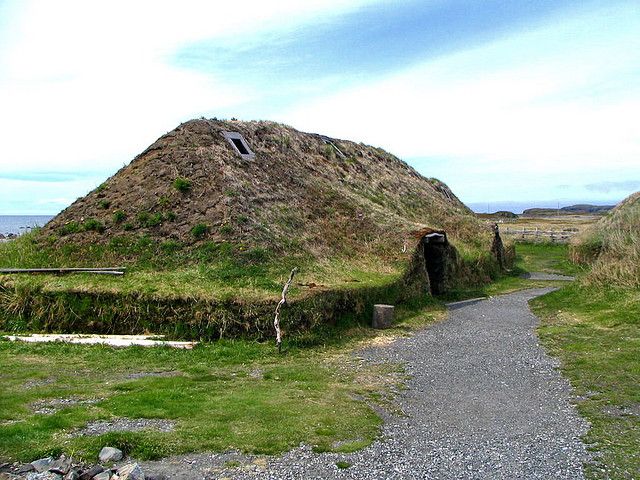
Located at just the corner of Newfoundland’s Great Northern Peninsula, this archaeological site is believed to be the first European Settlement in North America. Before the Scandinavians lived here, it was the home of the native population dating back to 5,000 years.
There are many Viking artifacts like spin yarns, axes, pottery, or the Viking Knarr Snorri replica that are displayed here as also houses, which are covered with peat roofs, which are still standing here.
A visit to the site takes you back in time where the mysterious intermingles with reality, and casts a spell upon you. Many other discoveries and findings are still taking place here which is very exciting for travelers. The site was inscribed as a World Heritage Site by UNESCO in the year 1978.




Leave a Comment